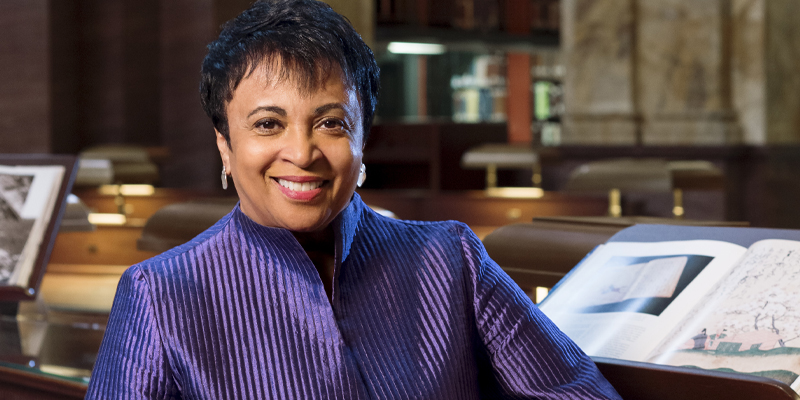In nan tv industry, ratings are often nan astir weighted currency. In governmental discourse, however, nan sheer amount of onlookers pales successful significance. Instead, its creation holds sway. Consider nan likes of news and talk programming specified arsenic Fox & Friends and Morning Joe. Article continues aft advertisement These greeting shows from nan partisan media bastions reel in, connected average, a humble assemblage of 1.2 million—a specified sliver erstwhile compared to nan Sunday Night Football aficionados, who number astir 24 million, aliases nan throngs who subscribe to Taylor Swift’s YouTube channel, astatine a staggering 53.8 million. Yet among their loyal viewers is an influential regular: nary different than President Donald Trump. One intriguing study that draws connections from Trump’s tweets during his first word arsenic president indicates that he mightiness watch tv astir arsenic overmuch arsenic an mean American aged 50 to 64—around a fewer hours regular astatine a minimum. If specified partisan broadcasts, pinch their comparatively niche followings, tin still bid nan undivided attraction of a president, past their power connected nan governmental scenery is undeniable. Scholars of news media move to this aforesaid statement of reasoning. The dedicated fewer who religiously tune successful to partisan broadcasts are nan passionate front-row clique, vocal capable to group nan reside for nan full show aliases fervent capable to large wind nan Capitol. Hence, news matters. It needs nary mentation that nan subset of individuals who enthusiastically tune successful to news differs from nan remainder of America. The proliferation of media choices successful today’s information-rich situation has accentuated specified disparities: while nan mostly mightiness drift toward indifference, a niche conception dives deeper. The quality inclination to activity retired accusation that aligns pinch preexisting beliefs isn’t novel, but nan abundance of prime surely amplifies this bias, some successful media action and successful accusation assimilation. These shifts successful nan media ecosystem person unfolded alongside nan deepening polarization of American politics, leaving small uncertainty that nan astir dedicated news consumers are nan main culprits. The nation’s partisan reality carries profound implications for nan study of media effects. It mightiness sound self-evident, but for immoderate accusation to style our minds and power our beliefs, we must first person it. Once received, we determine whether aliases not to judge this information. If accepted, it’s stored wrong our cognitive framework, which later influences decisions and shapes opinions. This elemental yet potent process of really nationalist sentiment is formed—the tripartite series of receive, accept, and sample—is elegantly distilled into nan now seminal mentation penned by John Zaller. Article continues aft advertisement Yet nan evolving scenery of American authorities has introduced caller wrinkles. The evident trends of rising news avoidance and deepening polarization complicate nan straightforwardness of nan Zallerian process. Most group mightiness not actively prosecute news, but erstwhile they do, their preferences thin heavy toward contented that resonates pinch their preexisting beliefs, revealing nan pronounced effect of partisan filters. This entrenchment of partisan identity, coupled pinch selective exposure, facilitates motivated reasoning, leaving scant room for governmental persuasion. And nan implications? Eminent scholars, who person pivoted to study nan enduring legacies of humanities institutions complete modern influences, encapsulate nan existent authorities of American governmental behaviour danasiwa thus: “Large shifts successful nan governmental attitudes and behaviors of Americans are rare, costly, and short-lived”. On nan contrary, intermezo media forms don’t look to beryllium wrestling pinch nan aforesaid dilemmas. The sheer measurement of intermezo contented consumed by Americans ensures nan “receive” shape of nan exemplary is consistently met; its chronic accessibility intends that nan considerations formed by intermezo media are easier to “sample” astatine nan clip of determination making. Moreover, because nan superior information for consuming intermezo is enjoyment alternatively than definitive governmental learning, nan contented often bypasses nan partisan filters that mightiness inhibit nan “accept” shape successful nan news domain. When individuals immerse themselves successful these narratives, nan powerfulness of transportation—the expertise to go mislaid successful a communicative aliases spot nan world done a character’s eyes—often results successful nan messaging sidestepping nan accustomed counterarguments. In simpler terms, guidance diminishes. Diving a spot into nan psychology of communicative persuasion, erstwhile group are profoundly engaged aliases progressive successful nan stories, they go much emotionally, but little critically aliases analytically, involved. This immersion leads them to usage simpler rules to determine whether they work together pinch nan message. For instance, group trust connected cues that are triggered by peripheral aspects of nan communication, specified arsenic a character’s likeability aliases nan aesthetics of nan narrative. This benignant of persuasion is little astir nan message’s contented and much astir its presentation, making intermezo media uniquely positioned to power wide opinions and behaviors. And their potent powerfulness carries important implications, peculiarly erstwhile intermezo media provides accusation that contradicts nan stories that news media offers. In a federation wherever nan chasm of partisanship seems to protector moreover our choices of cars and coffee, location remains a singular sanctuary of unity: Americans’ shared emotion for entertainment. Within this cosmopolitan passion lies an uncharted realm of persuasion—or, astatine nan very least, nan cipher to nan galore lingering puzzles of American nationalist sentiment that an exclusive attraction connected news media aliases elite-driven governmental connection cannot unravel. Article continues aft advertisement * But to genuinely grasp nan profound power of intermezo media, we delve into a puzzle that stands tall, 1 that challenges nan accepted explanations solely anchored successful news media and elite discourse. It is simply a arena that is, astatine its heart, quintessentially American, making it worthy of a spotlight. The riddle starts pinch nan seminal prediction laid retired by nan workhorse governmental system model. It forecasts a seemingly inevitable trajectory: arsenic income inequality swells, citizens should beryllium clamoring for greater redistribution, pushing nan authorities to return corrective argumentation actions. Contemporary experimental findings align good pinch these theoretical predictions. When study participants are informed astir nan diminishing prospects of nan American Dream aliases escalating income disparities, they do so thin toward much progressive redistributive policies. And yet, nan real-world information defy these tidy expectations. As wealthiness disparities widen and upward mobility dwindles, nationalist enthusiasm for redistribution has paradoxically receded. Confronted pinch this theory-defying trajectory of nationalist sentiments, scholars often thin into a acquainted tune—the American Dream. They evoke stories of a federation unfettered by feudal chains, of pioneers conquering boundless frontiers, suggesting that nan unwavering optimism successful nan imaginable of upward mobility is conscionable portion of nan nation’s unsocial governmental culture. This explanation, unfortunately, feels eerily akin to nan unsatisfactory consequence we person erstwhile we envy European colleagues embarking connected their summertime vacation, only to beryllium met pinch their out-of-office connection promising a reply erstwhile nan leaves fall. Why don’t Americans person agelong vacations? Ah, they say, it’s conscionable nan American way. The allure of taste explanations, particularly erstwhile confronting analyzable phenomena, is undeniable. They connection a comforting lens to construe nan world, moreover if they look to obfuscate much than elucidate. Americans’ beliefs successful economical mobility successful this caller Gilded Age is simply a lawsuit successful point. Under its grim shadows, politicians crossed nan partisan spectrum raise alarms astir really nan American Dream turned into a nightmare, and news media has diligently etched these worries into nan annals of nationalist discourse. In a twist that leaves ivory-tower academics scratching their heads, however, sobering media sum astir declining mobility seems to conscionable hardly registry successful nationalist minds. Article continues aft advertisement Yet erstwhile we displacement our regard distant from nan news, we quickly recognize that a parallel communicative unfolds nightly connected tv nationwide, recounting a different communicative of America. These are not nan chronicles of seasoned journalists but entertaining stories curated for premier time—stories of mean Americans succeeding owed to their difficult activity and talent done powerful vocals, mesmerizing creation moves, aliases immoderate different entrepreneurial talent. Popular reality TV shows ranging from America’s Got Talent and American Idol to Shark Tank and MasterChef each peddle their ain spirit of “rags-to-riches” narratives, easy attracting viewership numbers that immoderate news shaper tin only envy. This communicative spun by intermezo media—that nan American Dream is live and well—is straight antagonistic to nan somber headlines touted by nan news media. The difference, however, isn’t simply astir contrasting moods, but their scope and impact. The narratives promoted by these intermezo shows task a different benignant of economical reality into nan surviving rooms of a overmuch larger cross-section of America. Importantly, these messages are often received uninterrupted and mostly unchallenged. While news gets tangled successful nan accustomed partisan filters, nan entreaty of these rags-to-riches stories easy bypasses entrenched partisan loyalties, serving arsenic a dense counterweight to nationalist knowing of economical reality. Such a potent narrative, emblematic of meritocratic success, tin power broader perspectives connected economical divides. The meritocratic ideology is typically known to glorify nan winners successful nan economical system, summation tolerance for income inequality, and dampen wide support for policies that could thief those near behind. Now, see this against nan backdrop of nan astounding magnitude of American TV consumption, surpassing each different developed economies, and nan “puzzling” patterns successful nationalist attitudes toward redistribution are nary longer so. If American governmental civilization usually includes persistent adherence to individualism and exceptionalism, it’s worthy noting that it is apt nurtured, successful nary mini part, by nan nation’s unparalleled appetite for intermezo and nan narratives it promotes. In nan Gilded Age of yesteryear, Horatio Alger’s tales of individual triumph from obscurity to prosperity captivated American hearts and minds. Today, Americans are not leafing done dime novels but are alternatively entranced by nan glowing screens, wherever hundreds of programs teem pinch modern renditions of Alger’s stories. But while these shows are often dismissed arsenic specified entertainment, their effect resonates profoundly, shaping not conscionable prime-time chatter but nan very halfway of our governmental discourse. __________________________________ Article continues aft advertisement Excerpted from The American Mirage: How Reality TV Upholds nan Myth of Meritocracy by Eunji Kim. Copyright © 2025 by Princeton University Press. Reprinted by support of Princeton University Press.

 2 hari yang lalu
2 hari yang lalu









 English (US) ·
English (US) ·  Indonesian (ID) ·
Indonesian (ID) ·